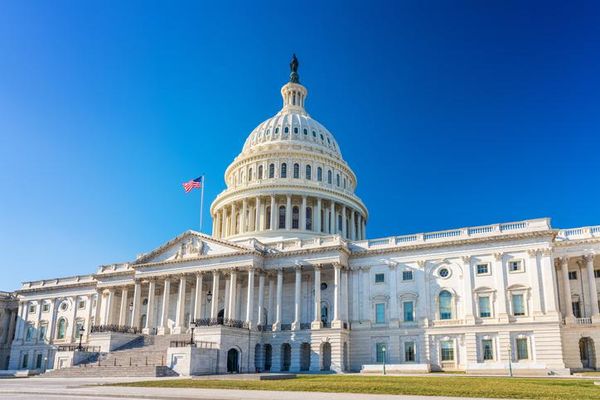By Rayna M. Letourneau, University of South Florida
Despite a national nursing shortage in the United States, over 80,000 qualified applications were not accepted at U.S. nursing schools in 2020, according to the American Association of Colleges of Nursing.
This was due primarily to a shortage of nursing professors and a limited number of clinical placements where nursing students get practical job training. Additional constraints include a shortage of experienced practitioners to provide supervision during clinical training, insufficient classroom space and inadequate financial resources.
Although the 80,000 may not account for students who apply to multiple nursing schools, it clearly suggests that not all qualified students are able to enroll in nursing school.
I am a nurse researcher, professor of nursing and founding director of WIRES, an office at the University of South Florida that focuses on the well-being of the health care workforce. I’ve found that the nursing shortage is a complex issue that involves many factors – but chief among them is the shortage of faculty to train future nurses.
Growing demand for nurses
There are not enough new nurses entering the U.S. health care system each year to meet the country’s growing demand. This can have serious consequences for patient safety and quality of care.
Nationally, the number of jobs for registered nurses is projected to increase by 9% between 2020 and 2030.
Some states project an even higher demand for registered nurses because of their population and their needs. Florida, for example, will need to increase its number of registered nurses by 16% over the next decade.
The U.S. Bureau of Labor Statistics estimates there will be about 194,500 openings for registered nurses each year over the next decade to meet the demands of the growing population, and also to replace nurses who retire or quit the profession. This means the U.S. will need about 2 million new registered nurses by 2030.
In addition to a shortage of registered nurses, there is also a shortage of nurse practitioners. Nurse practitioner is identified as the second fastest-growing occupation in the next decade, after wind turbine technicians, with a projected increase of 52.2%. Nurse practitioners have an advanced scope of practice compared with registered nurses. They must complete additional clinical hours, earn a master’s or doctoral degree in nursing, and complete additional certifications to work with specific patient populations.
The COVID-19 pandemic has exacerbated the health and wellness problems of the nursing workforce. Despite these problems, student enrollment in nursing schools increased in 2020. The pandemic has not turned people away from wanting to pursue a career in nursing. However, without enough nursing faculty and clinical sites, there will not be enough new nurses to meet the health care demands of the nation.
Need for more nursing faculty
Currently, the national nurse faculty vacancy rate is 6.5%. This is slightly improved from the 2019 rate of 7.2%. More than half of all nursing schools report vacant full-time faculty positions. The highest need is in nursing programs in Western and Southern states.
Nursing education in clinical settings requires smaller student-to-faculty ratios than many other professions in order to maintain the safety of patients, students and faculty members. Regulatory agencies recommend at least one faculty member to no more than 10 students engaged in clinical learning.
The faculty shortage is also affected by the fact that many current nursing faculty members are reaching retirement age. The percentage of full-time nursing faculty members aged 60 and older increased from roughly 18% in 2006 to nearly 31% in 2015.
The American Association of Colleges of Nursing reports the average ages of doctorally prepared nurse faculty members at the ranks of professor, associate professor and assistant professor were 62.6, 56.9 and 50.9 years, respectively.
[More than 140,000 readers get one of The Conversation’s informative newsletters. Join the list today.]
Another factor that contributes to the nursing faculty shortage, and the most critical issue related to faculty recruitment, is compensation. The salary of a nurse with an advanced degree is much higher in clinical and private sectors than it is in academia.
According to a survey by the American Association of Nurse Practitioners, the median salary of a nurse practitioner, across settings and specialties, is $110,000. By contrast, the AACN reported in March 2020 that the average salary for master’s-prepared assistant professors in nursing schools was just under $80,000.
Fixing the faculty shortage
Innovative strategies are needed to address the nursing faculty shortage. The Title VIII Nursing Workforce Reauthorization Act of 2019 was a start. The act provides funding for nursing faculty development, scholarships and loan repayment for nurses, and grants for advanced nursing education, nursing diversity initiatives and other priorities.
The Build Back Better Act that passed the U.S. House of Representatives in November 2021 includes funding to help nursing schools across the country recruit and retain diverse nursing faculty and enroll and retain nursing students. The act is now before the U.S. Senate.
In addition to national strategies, individual states are addressing the shortage at the local level. Maryland, for example, awarded over $29 million in grants to 14 higher education institutions with nursing programs in Maryland to expand and increase the number of qualified nurses.
Finally, offering faculty salaries comparable to those in clinical settings may attract more nurses to use their expertise to train and expand the next generation of health care workers.![]()
Rayna M. Letourneau, Assistant Professor of Nursing, University of South Florida
This article is republished from The Conversation under a Creative Commons license. Read the original article.







